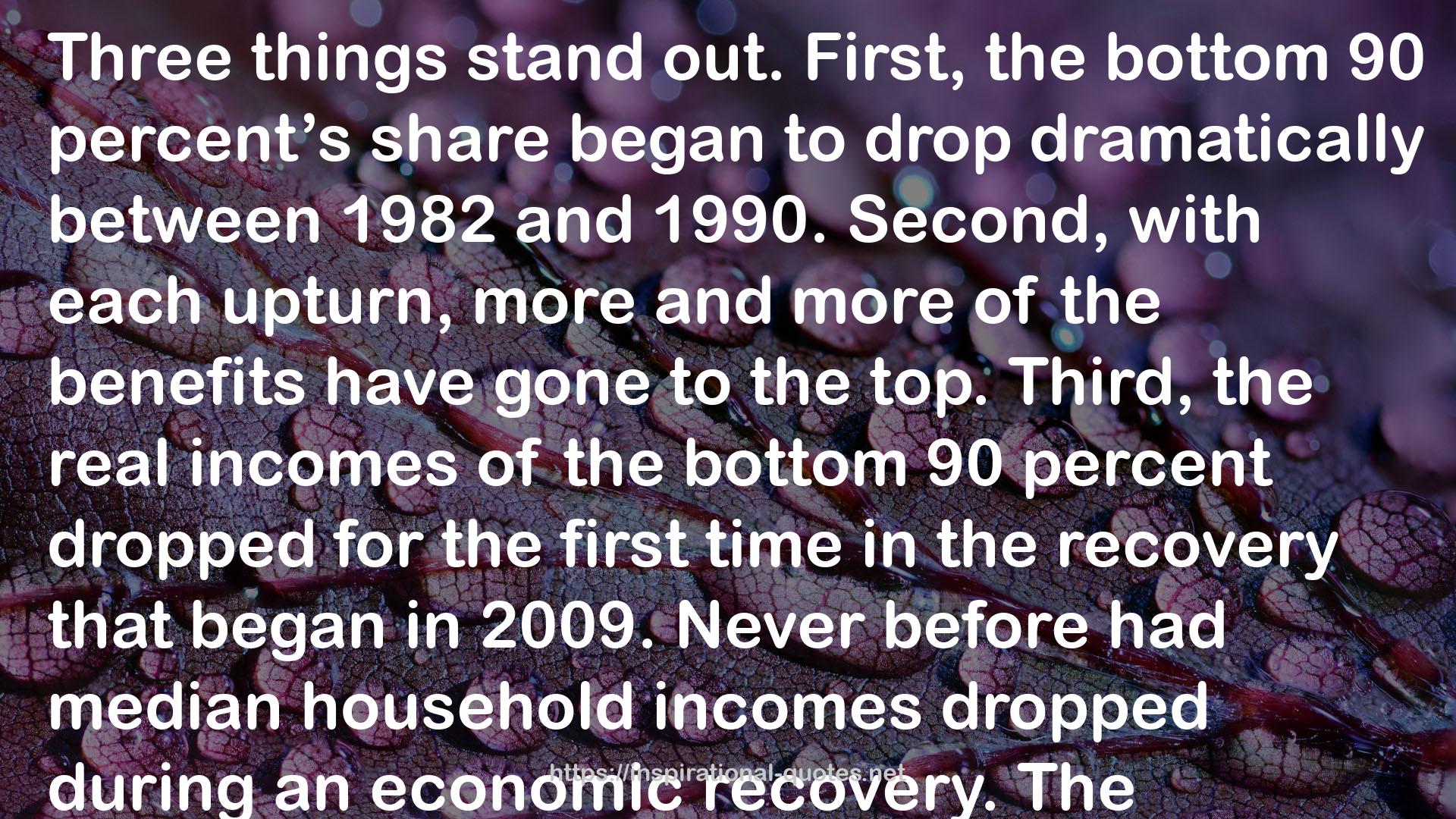" Three things stand out. First, the bottom 90 percent’s share began to drop dramatically between 1982 and 1990. Second, with each upturn, more and more of the benefits have gone to the top. Third, the real incomes of the bottom 90 percent dropped for the first time in the recovery that began in 2009. Never before had median household incomes dropped during an economic recovery. The three-decade pattern suggests the vicious cycle has accelerated: Those with the most economic power have been able to use it to alter the rules of the game to their advantage, thereby adding to their economic power, while most Americans, lacking such power, have seen little or no increase in their real incomes. FIGURE 8. DISTRIBUTION OF AVERAGE INCOME GROWTH DURING EXPANSIONS Source: Pavlina R. Tcherneva, “Reorienting Fiscal Policy: A Bottom-up Approach,” Journal of Post Keynesian Economics 37, no. 1 (2014): 43–66. This trend is not sustainable, neither economically nor politically. In economic terms, as the middle class and poor receive a declining share of total income, they will lack the purchasing power necessary to keep the economy moving forward. Direct redistributions from the rich sufficient to counter this would be politically infeasible. Meanwhile, as ever-larger numbers of Americans conclude that the game is rigged against them, the social fabric will start to unravel. "
― Robert B. Reich , Saving Capitalism: For the Many, Not the Few
